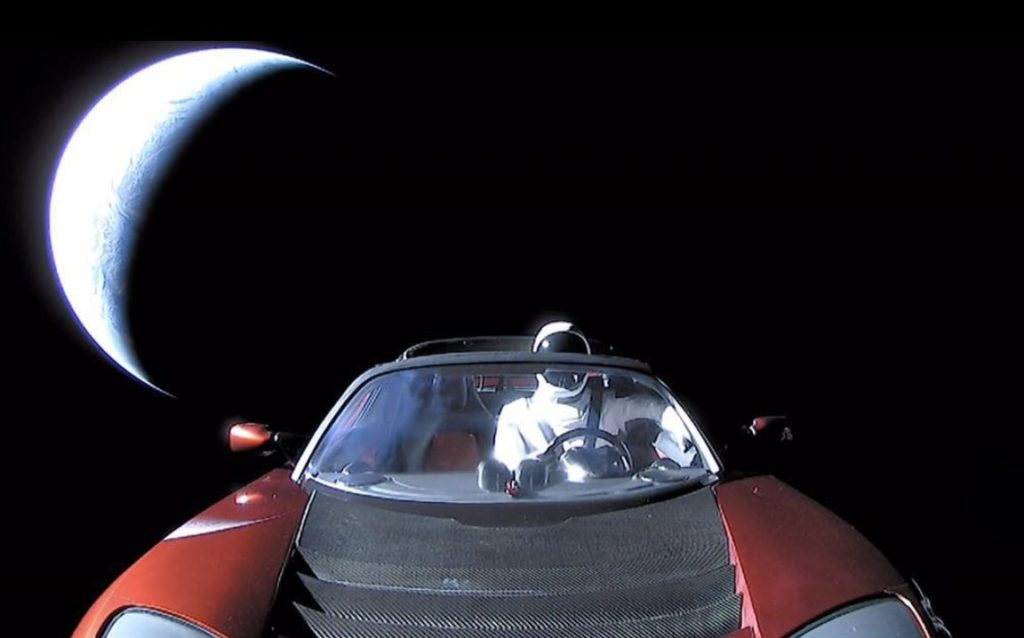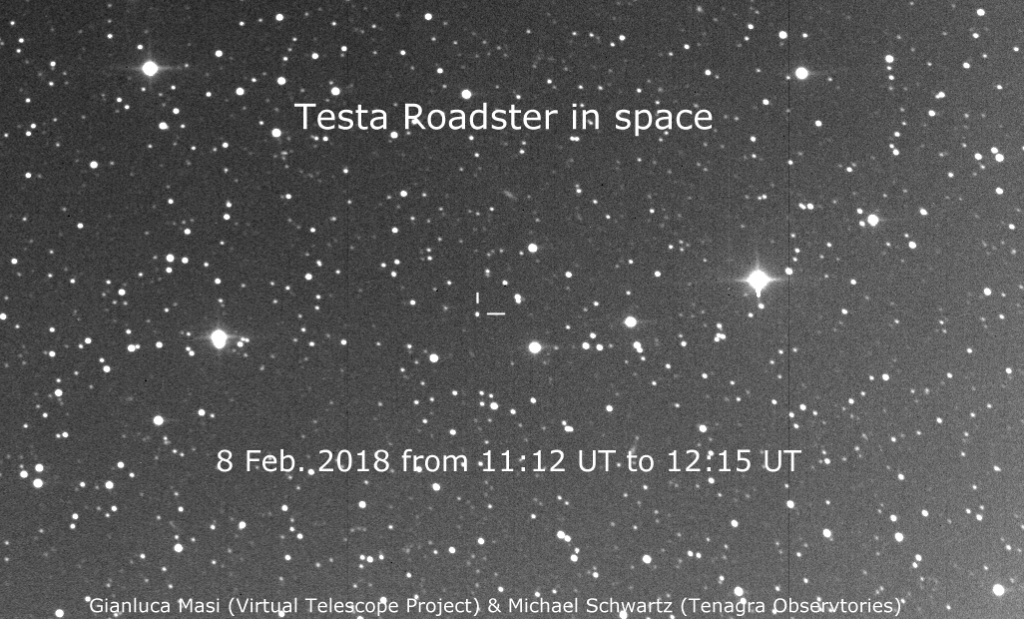Breaking out of low-earth orbit: realising the promise of Falcon Heavy
So it seems, maybe, that the “high frontier” of human space exploration may not be closed after all. The successful test flight of SpaceX’s Falcon Heavy Lift vehicle was also the first time a private company, rather than a government, sent anything beyond low earth orbit. In a master-stroke of publicity and whimsy, SpaceX’s founder Elon Musk decided to attach his red electric car, manufactured by SpaceX’s sister company Tesla, to the front of the second stage booster. Sitting inside, one hand on the draped nonchalantly over the windowsill and the other posed coolly on the steering wheel, a mannequin modelled SpaceX’s appropriately futuristic but actually fully functional space suit. By the time this unusual cargo reached orbit, there was enough propellant left over to inject both the booster and the attached car into an elliptical orbit around the sun reaching to the asteroid belt. Out there, it will probably be undisturbed for millennia.

The livestream of the launch was carefully choreographed, with cheering SpaceX employees heard in the background behind the engineer-presenters, together with blasts of pop music at the appropriate moments. It was much more exciting than any rocket launch had been for a long time, partly because (it seemed) no-one was entirely sure what would happen. But what happened, in the end, matched almost exactly what had appeared in a simulation video only days before. Does this mean, perhaps, that prospects for manned space exploration might be improving soon too?
Recall, for an instant, what manned space “exploration” has been like for the last fifty years: a series of uninspiring endurance tests in an orbiting space station, the ISS. In fact, the space station itself seems to have been created to give a safe destination for manned rocket launches and to assure the future of heavily subsidised American aerospace industry. It’s not clear at all how we can dig ourselves out of this particular hole of sending people into orbit to (mostly) take pictures of the Earth through fancy windows.
Pessimistic SF writers had imagined that the frontier had closed, so the reasoning went, because all the engineering talent was now going to writing software for internet start-ups, most of whom were just interested in finding new ways to distract people in order to sell them more advertising. Worse, fingertip access to the world’s store of knowledge (or at least Wikipedia) meant that it has become discouragingly easy to find out just how impossible it was to do something that had never been done before. But the truth turned out to be more complicated and interesting than that.
On the one hand, those internet start-ups created a new class of geek-entrepreneur who love rockets and spaceships, and advanced software engineering turned out to be very useful for lowering launch costs by enabling boosters to return to the landing sites. The most impressive aspect of the Falcon Heavy launch is how perfectly the highly complex system followed the simulations made before launch, validating SpaceX’s impressive engineering capabilities. However, all this still takes place within the systems which have paralysed the human exploration of space over the last half-century.

Elon Musk has decided that no resources will be devoted to making Falcon Heavy meet NASA’s stringent requirements for manned launches. Instead SpaceX are focussing on near-term launches to the ISS with the smaller Falcon 9, because that’s where the money is. Meanwhile, NASA themselves are locked into a vast multi-year spending program for their new rocket, the Space Launch System (or more unkindly, the Senate Launch System), a billion dollar disposable rocket with no clearly defined destination. In an unfortunate commentary on the state of innovation in rocket technology for the SLS contractors, the spacecraft actually makes use of spare parts left lying around after the end of the shuttle programme.
Meanwhile, in low earth orbit, the ISS is supposed to be decommissioned at the end of the next decade. Needless to say, not everyone is in favour of this, especially those whose livelihood depends on it. In an attempt to find some use for the fantastically expensive SLS, it has been proposed to create a new space station — but this time, groan, in orbit around the moon. Reaction to the Falcon Heavy launch has been mostly positive, although one ill-informed killjoy commentator did insist that we should “think about the environmental impact”. Yes indeed. Today, Musk is about the only player in this game with a clearly defined vision extending beyond low Earth orbit. Let’s hope he makes enough money from his satellite launches to realise it.